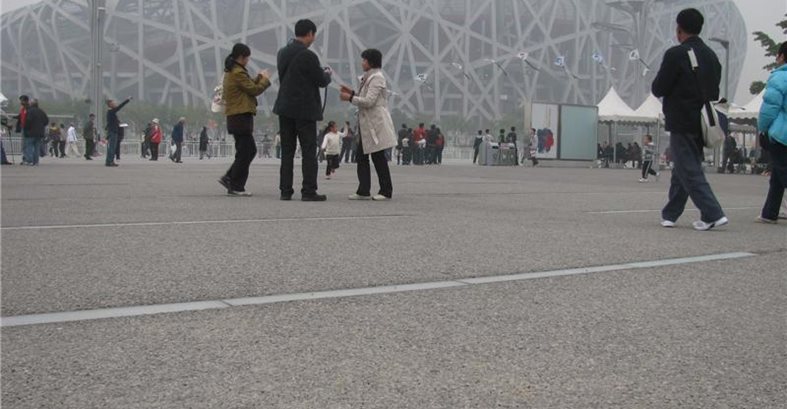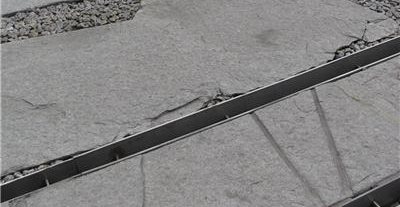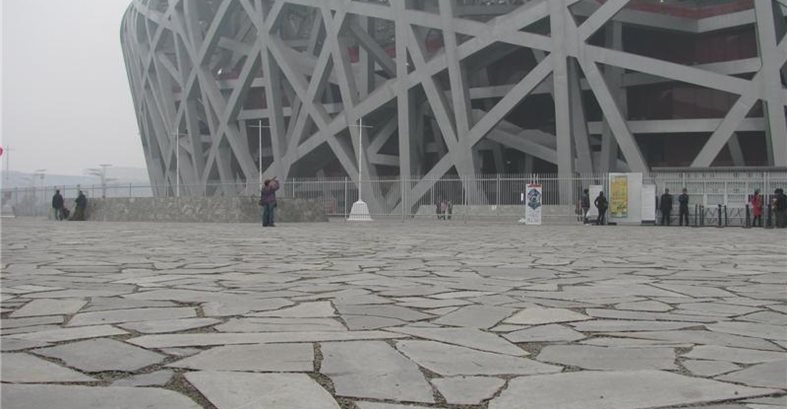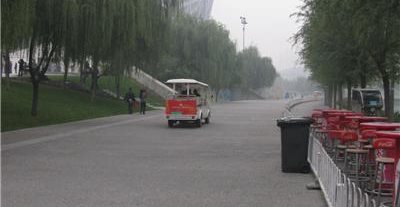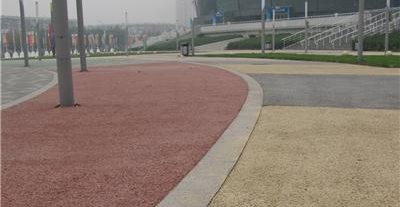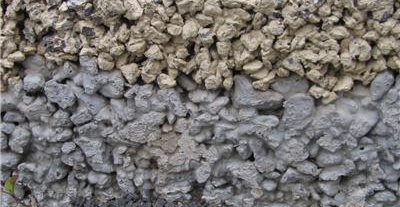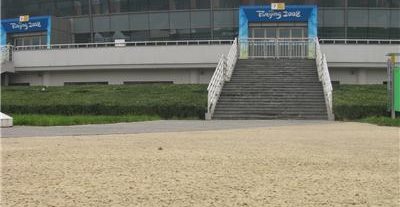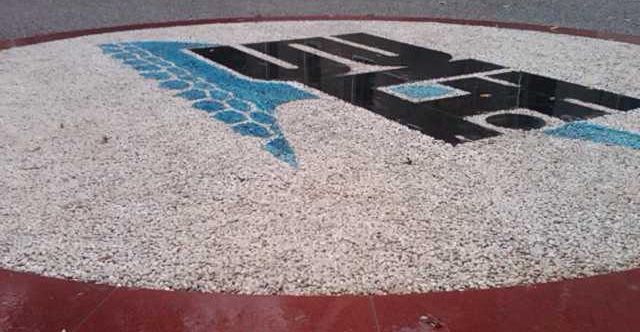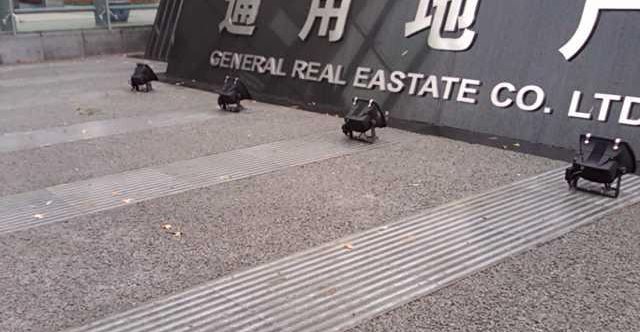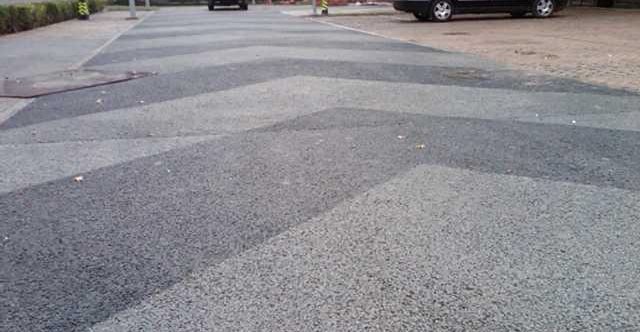- Staining Concrete
- Stamped Concrete
- Concrete Overlays
- Concrete Resurfacing
- Concrete Polishing
- Concrete Dyes
- Colored Concrete
- Indoor Concrete
- Concrete Floors
- Concrete Countertops
- Garage Floor Coatings
- Furniture, Sinks, Fire Bowls
- Basement Floors
- Outdoor Concrete
- Concrete Patios
- Concrete Driveways
- Concrete Pool Decks
- Outdoor Kitchens & Counters
- Outdoor Fireplace
- Concrete Walkways
- Concrete Pavers
- Concrete Walls
- Repair & Maintenance
- Foundation Repair
- Concrete Crack Repair
- Concrete Sealers
- Building with Concrete
- Concrete Homes
- Concrete Basements
- Decorative Concrete
- Fire Resistant
The Decorative Side of Pervious Concrete
In Beijing, China, pervious concrete pavements combine beauty with practicalityIn my mind, pervious concrete has always been utilitarian – typically gray, very rough, and with nothing decorative about it. I have also had doubts about the long-term durability of pervious concrete in freezing temperatures. On a recent trip to Beijing, China, I was introduced to the complete opposite. I encountered miles and miles of beautiful, colored pervious concrete pavements worthy of being called "decorative." The decorative pervious concrete, built for the 2008 Summer Olympics at Beijing National Stadium, had been in place for almost four years. As I walked these pavements, I searched for signs of surface raveling or excessive cracking, and found none. Beijing faces freezing temperatures in the winter; so I was encouraged to see this pervious concrete holding up so well.
ACI Committee 522 defines pervious concrete as "a zero-slump, open-graded material consisting of portland cement, coarse aggregate, little or no fine aggregate, admixtures and water. The combination of these ingredients will produce a hardened material with connected pores, ranging in size from 0.08 to 0.32 inch, that allow water to pass through easily."
What this definition does not mention is all the benefits to installing pervious concrete. In addition to allowing water to flow through the slab at an amazing rate (anywhere from 2 to 18 gallons per minute per square foot, according to ACI), pervious concrete reduces the area needed to manage stormwater runoff. Aquifers are replenished when rainwater percolates through the pavement and back into the earth. As water drains through pervious pavement, oil and other contaminates do not reach our water supplies and are filtered naturally in the soil. A pervious concrete slab will also cool down faster in the evening after the sun has gone down, helping to reduce the urban heat-island effect. These are great benefits to pervious concrete. But as these photos taken in Beijing show, pervious concrete can also add beauty and color to our world.
Related links
